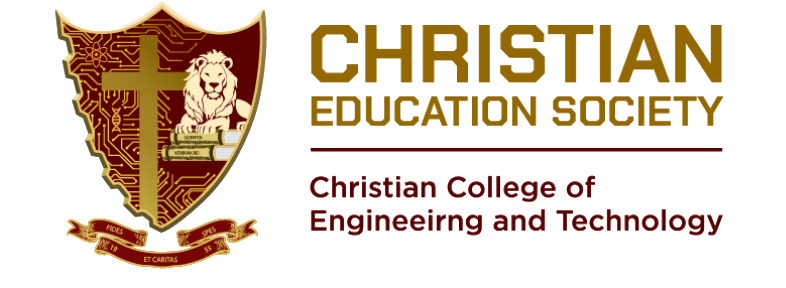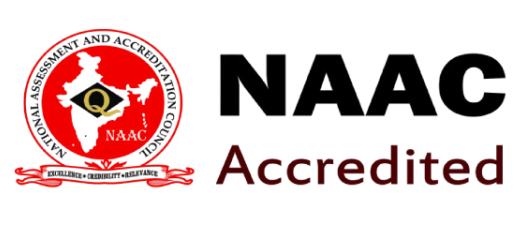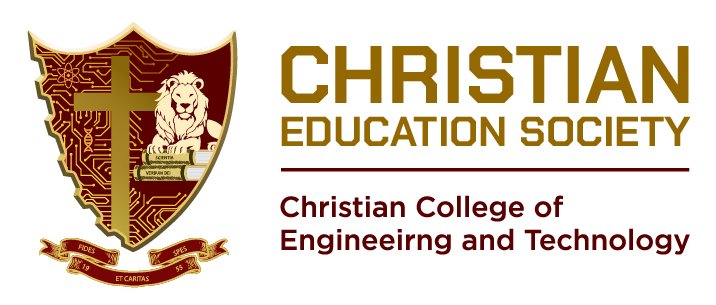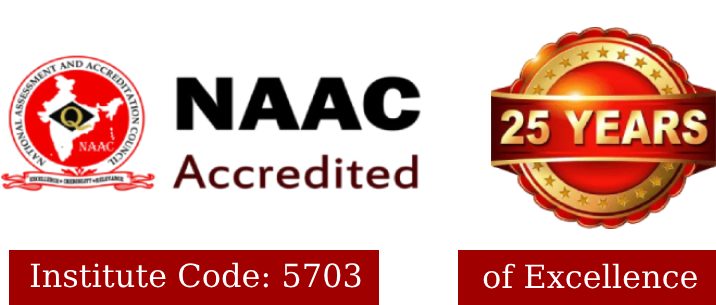Christian College of Engineering and Technology



of Excellence

Christian College Of Engineering and Technology
(Approved By AICTE, New Delhi | Affiliated To Anna University, Chennai )
Near Checkpost, Dindigul Road, Oddanchatram – 624 619, Dindigul (Dist), Tamilnadu



M.E Computer Science & Engineering
Introduction
The P.G programme (M.E – CSE) was started in the academic year 2013 – 2014 with an in take of 24 students. The curriculum of Computer Science and Engineering, framed by Anna University, lays greater emphasis on design principles and development of System Software for operating systems, Database Management Systems, Data mining, Computer Graphics and Networks, in addition to design & development of software packages. The course lays greater emphasis on Computer Engineering, Communication Engineering and Electronics Engineering which are of utmost importance in today’s world. Miniaturization in Computer Technology, audio-video and image processing, storage and retrieval, data processing, communication and security etc.., are going to revolutionize the Computer knowledge in the coming decades. Industrial Training is an integral part of the curriculum. In keeping with the spirit of the curriculum the department stresses on nurturing the talent of students for top industries across the globe, and for pursuing higher studies and R&D in National and International Universities. The Programme has excellent infrastructure facilities with well equipped Computer Laboratories. The CSE department frequently conducts seminars, covering latest developments like Android, Cloud Computing, Data mining, etc, Technical Symposiums, National level and International level Conferences in the field of Computer Science and Engineering by inviting experts from the field academics and industry for enriching the knowledge of students.
PROGRAMME EDUCATIONAL OBJECTIVES (PEOs):
- Develop proficiency as a computer science engineer with an ability to solve a wide range of computational problems and have sustainable development in industry or any other work environment.
- Analyze and adapt quickly to new environments and technologies, gather new information, and work on emerging technologies to solve multidisciplinary engineering problems.
- Possess the ability to think analytically and logically to understand technical problems with computational systems for a lifelong learning which leads to pursuing research.
- Adopt ethical practices to collaborate with team members and team leaders to build technology with cutting-edge technical solutions for computing systems
- Strongly focus on design thinking and critical analysis to create innovative products and become entrepreneurs.
PROGRAM COURSE OUTCOMES (PCOs):
- An ability to independently carry out research / investigation and development work to solve practical problems.
- An ability to write and present a substantial technical report/document.
- Students should be able to demonstrate a degree of mastery over the area of Computer Science and Engineering.
- Efficiently design, build and develop system application software for distributed and centralized computing environments in varying domains and platforms.
- Understand the working of current Industry trends, the new hardware architectures, the software components and design solutions for real world problems by Communicating and effectively working with professionals in various engineering fields and pursue research orientation for a lifelong professional development in computer and automation arenas.
- Model a computer based automation system and design algorithms that explore the understanding of the tradeoffs involved in digital transformation.
Computer Science and Engineering (CSE) is one of the most sought-after courses in engineering. The field of CSE integrates computer engineering and computer science. The M.E Computer Science and Engineering is a two-year post-graduation program with the objective to develop advanced programming skills and strategies to solve various logical challenges using different programming languages. The M.E Computer Science and Engineering Programme was started in 2013, with an intake of 24 students. Students are given the opportunity to build and improve key competencies in computer science, which will help them enter into the highly competitive IT business. . The programme offers a well- balanced curriculum based on a choice-based credit system with several courses both at the theoretical and practical levels recommended by Anna University. The courses of study include core courses, laboratory courses, audit courses, project work, industry visit and technical seminar, online courses, self-study courses, one-credit courses, and industrial training and internship.The programme aims at developing essential analytical capabilities, technical proficiency, and research skills among the students to face emerging challenges thus contributing to the progression of the emerging IT sector.
TOTAL NUMBER OF SEATS ALLOTED – 24
ESTABLISHED ON 2013-2014
| MA4106 – APPLIED PROBABILITY AND STATISTICS FOR COMPUTER SCIENCE ENGINEERS – [C101] | ||
| C101.1 | Apply the concepts of Linear Algebra to solve practical problems. | |
| C101.2 | Use the ideas of probability and random variables in solving engineering problems | |
| C101.3 | Be familiar with some of the commonly encountered two dimensional random variables and be equipped for a possible extension to multivariate analysis. | |
| C101.4 | Use statistical tests in testing hypotheses on data. | |
| RM4151 – RESEARCH METHODOLOGY AND IPR – [C102] | ||
| C102.1 | Formulate research problem. | |
| C102.2 | Analyze literature review and find research gaps to finalize research objectives. | |
| C102.3 | Identify the need of ethics in research. | |
| C102.4 | Identify the need of IPR of research projects for economic growth and social benefits. | |
| C102.5 | Apply basic data analytics techniques: probability distribution, linear regression, ANOVA | |
| CP4151 – ADVANCED DATA STRUCTURES AND ALGORITHMS- [C103] | ||
| C103.1 | Design data structures and algorithms to solve computing problems. | |
| C103.2 | Choose and implement efficient data structures and apply them to solve problems. | |
| C103.3 | Design algorithms using graph structure and various string-matching algorithms to solve real-life problems. | |
| C103.4 | Design one’s own algorithm for an unknown problem. | |
| C103.5 | Apply suitable design strategy for problem solving. | |
| CP4152 – DATABASE PRACTICES – [C104] | ||
| C104.1 | Convert the ER-model to relational tables, populate relational databases and formulate SQL queries on data. | |
| C104.2 | Understand and write well-formed XML documents | |
| C104.3 | Be able to apply methods and techniques for distributed query processing. | |
| C104.4 | Design and Implement secure database systems. | |
| C104.5 | Use the data control, definition, and manipulation languages of the NoSQL databases | |
| CP4153 – NETWORK TECHNOLOGIES- [C105] | ||
| C105.1 | Explain basic networking concepts | |
| C105.2 | Compare different wireless networking protocols | |
| C105.3 | Describe the developments in each generation of mobile data networks | |
| C105.4 | Explain and develop SDN based applications | |
| C105.5 | Explain the concepts of network function virtualization | |
| CP4154 – PRINCIPLES OF PRGRAMMING LANGUAGES – [C106] | ||
| C106.1 | Describe syntax and semantics of programming languages | |
| C106.2 | Explain data, data types, and basic statements of programming languages | |
| C106.3 | Design and implement subprogram constructs | |
| C106.4 | Apply object-oriented, concurrency, and event handling programming constructs | |
| C106.5 | Develop programs in Scheme, ML, and Prolog and Understand and adopt new programming language | |
| CP4161- ADVANCED DATA STRUCTURES AND ALGORITHMS LABORATORY- [C107] | ||
| C107.1 | Design and implement basic and advanced data structures extensively | |
| C107.2 | Design algorithms using graph structures | |
| C107.3 | Design and develop efficient algorithms with minimum complexity using design techniques | |
| C107.4 | Develop programs using various algorithms. | |
| C107.5 | Choose appropriate data structures and algorithms, understand the ADT/libraries, and use it to design algorithms for a specific problem. | |
| CP4291 – INTERNET OF THINGS – [C108] | ||
| C108.1 | Understand the various concept of the IoT and their technologies | |
| C108.2 | Develop the IoT application using different hardware platforms | |
| C108.3 | Implement the various IoT Protocols | |
| C108.4 | Understand the basic principles of cloud computing | |
| C108.5 | Develop and deploy the IoT application into cloud environment | |
| CP4292-MULTICORE ARCHITECTURE AND PROGRAMMING – [C109] | ||
| C109.1 | Describe multicore architectures and identify their characteristics and challenges. | |
| C109.2 | Identify the issues in programming Parallel Processors. | |
| C109.3 | Write programs using OpenMP and MPI. | |
| C109.4 | Design parallel programming solutions to common problems. | |
| C109.5 | Compare and contrast programming for serial processors and programming for parallel processors | |
| CP4252 – MACHINE LEARNING – [C110] | ||
| C110.1 | Understand and outline problems for each type of machine learning | |
| C110.2 | Design a Decision tree and Random forest for an application | |
| C110.3 | Implement Probabilistic Discriminative and Generative algorithms for an application and analyze the results. | |
| C110.4 | Use a tool to implement typical Clustering algorithms for different types of applications. | |
| C110.5 | Design and implement an HMM for a Sequence Model type of application and identify applications suitable for different types of Machine Learning with suitable justification. | |
| SE4151 – ADVANCED SOFTWARE ENGINEERING [C111] | ||
| C111.1 | Identify appropriate process models based on the Project requirements | |
| C111.2 | Understand the importance of having a good Software Architecture. | |
| C111.3 | Understand the five important dimensions of dependability, namely, availability, reliability, safety, security, and resilience. | |
| C111.4 | Understand the basic notions of a web service, web service standards, and service-oriented architecture; | |
| C111.5 | Be familiar with various levels of Software testing | |
| CP4212 – SOFTWARE ENGINEERING LABORATORY [C112] | ||
| C112.1 | Can produce the requirements and use cases the client wants for the software being Produced. | |
| C112.2 | Participate in drawing up the project plan. The plan will include at least extent and work assessments of the project, the schedule, available resources, and risk management can model and specify the requirements of mid-range software and their architecture. | |
| C112.3 | create and specify such a software design based on the requirement specification that the software can be implemented based on the design. | |
| C112.4 | Can assess the extent and costs of a project with the help of several different assessment methods | |
| CP4391 – SECURITY PRACTICES – [C201] | ||
| C201.1 | Understand the core fundamentals of system security | |
| C201.2 | Apply the security concepts to wired and wireless networks | |
| C201.3 | Implement and Manage the security essentials in IT Sector | |
| C201.4 | Explain the concepts of Cyber Security and Cyber forensics | |
| C201.5 | Be aware of Privacy and Storage security Issues. | |
| MP4292- MOBILE APPLICATION DEVELOPMENT [C202] | ||
| C202.1 | Identify various concepts of mobile programming that make it unique from programming for other platforms | |
| C202.2 | Create, test and debug Android application by setting up Android development | |
| C202.3 | Demonstrate methods in storing, sharing and retrieving data in Android applications | |
| C202.4 | Utilize rapid prototyping techniques to design and develop sophisticated mobile interfaces | |
| C202.5 | Create interactive applications in android using databases with multiple activities including audio, video and notifications and deploy them in marketplace | |
| MP4094 – WEB SERVICES AND API DESIGN -[C203] | ||
| C203.1 | Explain how to write XML documents. | |
| C203.2 | Apply the web service building blocks such as SOAP, WSDL and UDDI | |
| C203.3 | Describe the RESTful web services. | |
| C203.4 | Implement the RESTful web service with Spring Boot MVC | |
| C203.5 | Discuss Resource-oriented Architecture. | |
| NC4201 – INTERNET OF THINGS AND CLOUD – [C204] | ||
| C204.1 | Understand the various concept of the IoT and their technologies.. | |
| C204.2 | Develop IoT application using different hardware platforms | |
| C204.3 | Implement the various IoT Protocols | |
| C204.4 | Understand the basic principles of cloud computing. | |
| C204.5 | Develop and deploy the IoT application into cloud environment | |
| CP4311- PROJECT WORK – I -[C205] | ||
| C205.1 | Identify the problem by applying acquired knowledge. | |
| C205.2 | Construct and organize executable project modules through proper designing. | |
| C205.3 | Choose efficient tools for implementation of the designed modules. | |
| C205.4 | Analyze and categorize the outcomes of the implementation and derive inferences. | |
| C205.5 | Examine the completed task and compile the project report. | |
| CP4411 – PROJECT WORK II – [C206] | ||
| C206.1 | Plan and construct improved methods for an identified problem by applying acquired knowledge. | |
| C206.2 | Plan and construct improved methods for an identified problem by applying acquired knowledge. | |
| C206.3 | Analyze and categorize the outcomes of the implementation and derive inferences. | |
| C206.4 | Assess the acquired outcomes based on evaluation metrics. | |
| C206.5 | Examine the completed task and compile the project report. | |


